Arsenal make the trip down to Portugal on Thursday to face European giants Benfica for the UEFA Europa League round of 32 first-leg fixture. This is likely to be a very tactical and technical battle between two coaches, of different experience levels, but two coaches who share a similar philosophy in terms of their teams’ styles of play.
This matchup is arguably the toughest to come out of the draw for the round of 32 alongside Manchester United’s game against Real Sociedad and is likely to be a fantastic display of free-flowing and dynamic football.
Both teams are underperforming in their respective leagues so far this season with the Gunners currently sitting in 11th place as of writing, whilst Jorge Jesus’ side are fourth, two points from dropping out of the top four places.
Arsenal are the favourites for this big European game in the Estadio da Luz, certainly on paper, due to the quality within the squad’s ranks that Mikel Arteta has to choose from, but Benfica also have some outstanding talent too that can cause serious problems to the visitors’ rather underwhelming backline.
This article will be a preview of the highly anticipated European matchup, in the form of a tactical analysis of both teams. It will be an analysis of the two sides’ styles of play and the tactics which could decide this tie in the end.
Lineups and formations
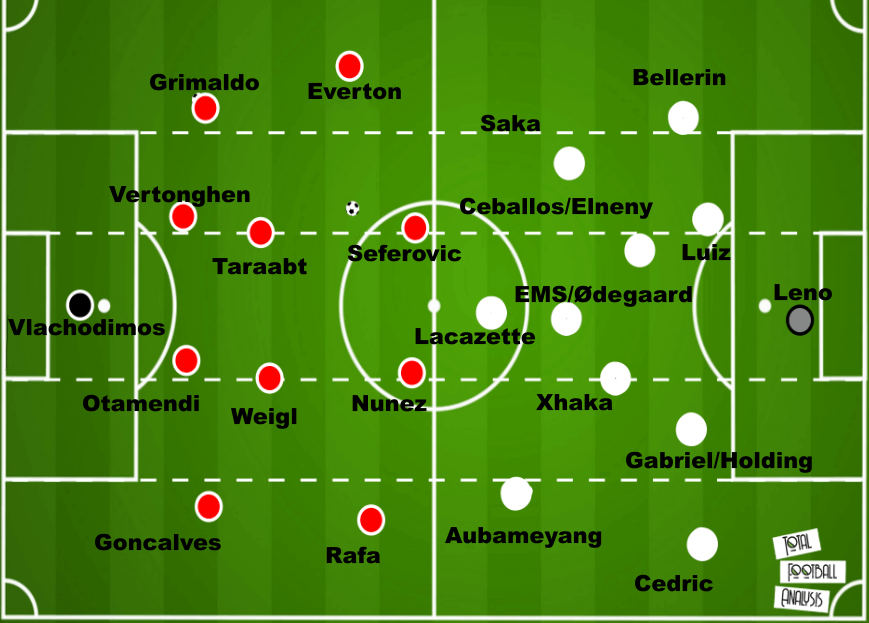
It is highly likely that Jesus will opt to deploy his team in a 4-4-2 base formation for the battle against Arsenal. Benfica have used this formation in 75 percent of their games in all competitions so far this season, whilst the 4-2-3-1 has been their second most used formation, being utilised in only 5 percent of their matches.
The Portuguese manager has a tendency to constantly rotate his starting elevens and so predicting Benfica’s lineup will certainly be difficult for Arteta when performing an opposition analysis on the team.
Os Encardos’ goalkeeper and backline have been rather consistent in this campaign. Odysseas Vlachodimos has played nearly every game so far this season, with four coming from the club’s six European matches. The back four consists of Gilberto/Diogo Goncalves at right-back, Nicolas Otamendi, and Jan Vertonghen as the centre-back pairing, and Alex Grimaldo at left-back.
The double-pivot could be Julian Weigl and Pizzi, but Adel Taraabt could also be named instead of one, flanked by Rafa Silva and Everton Soares. The centre-forward pairing is likely to be Haris Seferovic and highly-rated teenager, Darwin Nunez.
Arsenal, on the other hand, may set up in Arteta’s favoured 4-2-3-1 system, which provides balance in both attack and defence. The Gunners have used the 4-2-3-1 formation in 40 percent of their games so far in all competitions.
They have deployed the 3-4-3 for numerous games too but the last time Arteta set his team up in a different formation to the 4-2-3-1 was back in December.
Bernd Leno is likely to start in goal for the away side, but Mathew Ryan could also get the nod. With Kieran Tierney out injured, Cedric Soares could start at left-back once more, an unnatural position for the Portuguese defender. David Luiz and Rob Holding/Gabriel is likely to be the central defensive partnership.
Thomas Partey remains out through injury so either Dani Ceballos or Mohammed Elneny will play alongside Granit Xhaka as the double-pivot, whilst Emile Smith-Rowe or Martin Ødegaard may start as the number 10, flanked by Pierre-Emerick Aubameyang on the left and Bukayo Saka on the right. There is a high possibility that Alexandre Lacazette leads the line against Benfica.
Centre-forward creating space
Arsenal’s base formation is a 4-2-3-1 as mentioned in the previous section. However, when they have the ball in a positional attack, their structure changes to a more fluid 3-1-4-2/3-1-1-3. The Gunners currently average 30.86 positional attacks per 90 in all competitions and 42.17 in the Europa League.
When they have the ball with their backline, Arsenal like to use a 3-1 structure with one player sitting behind the opponent’s first line of pressure whilst a player from their double-pivot drops next to the centre-backs to create a back three, allowing the fullbacks to push higher up the pitch.
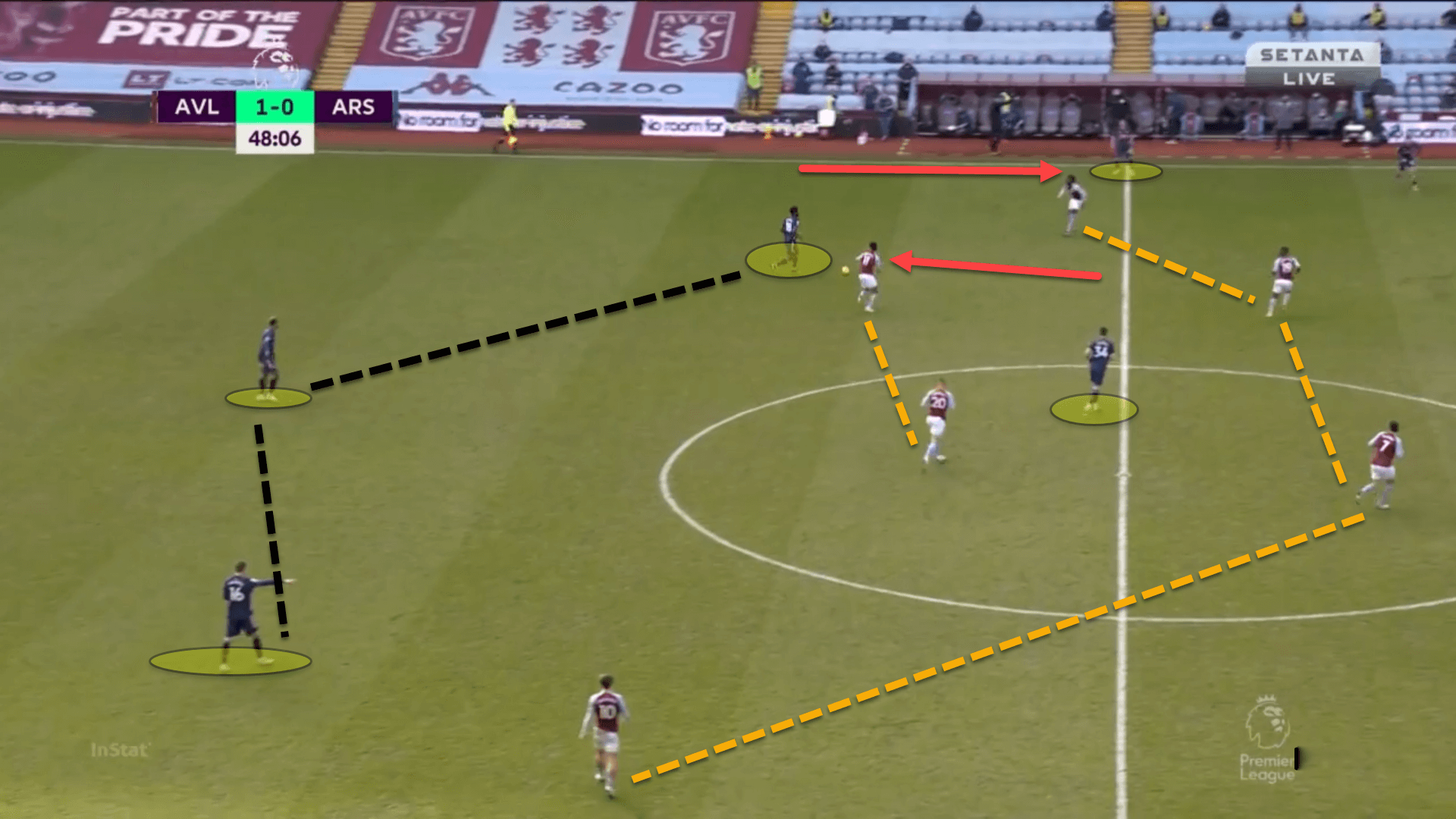
Here, we can see this positional structure in use. Partey has dropped beside Gabriel to create a back three to circulate the ball in front of Villa’s first line of pressure, allowing the fullbacks to push up the field, whilst Xhaka remains behind the first line, drifting left and right depending on the ball-side.
With this structure, Arsenal build through the wide areas. The reason for this is that they can create overloads and outnumber the opposition on the flanks. However, depending on the ball-side, Arsenal drop their centre-forward deeper to get involved in the play and the overload.
One of two things tends to happen here when this move occurs. Firstly, they have an extra passing option now to play through their opponents and progress forward, and secondly, they do this move in the hope that it drags one of the opposition’s defenders out, leaving space in behind for one of the wingers to attack into.
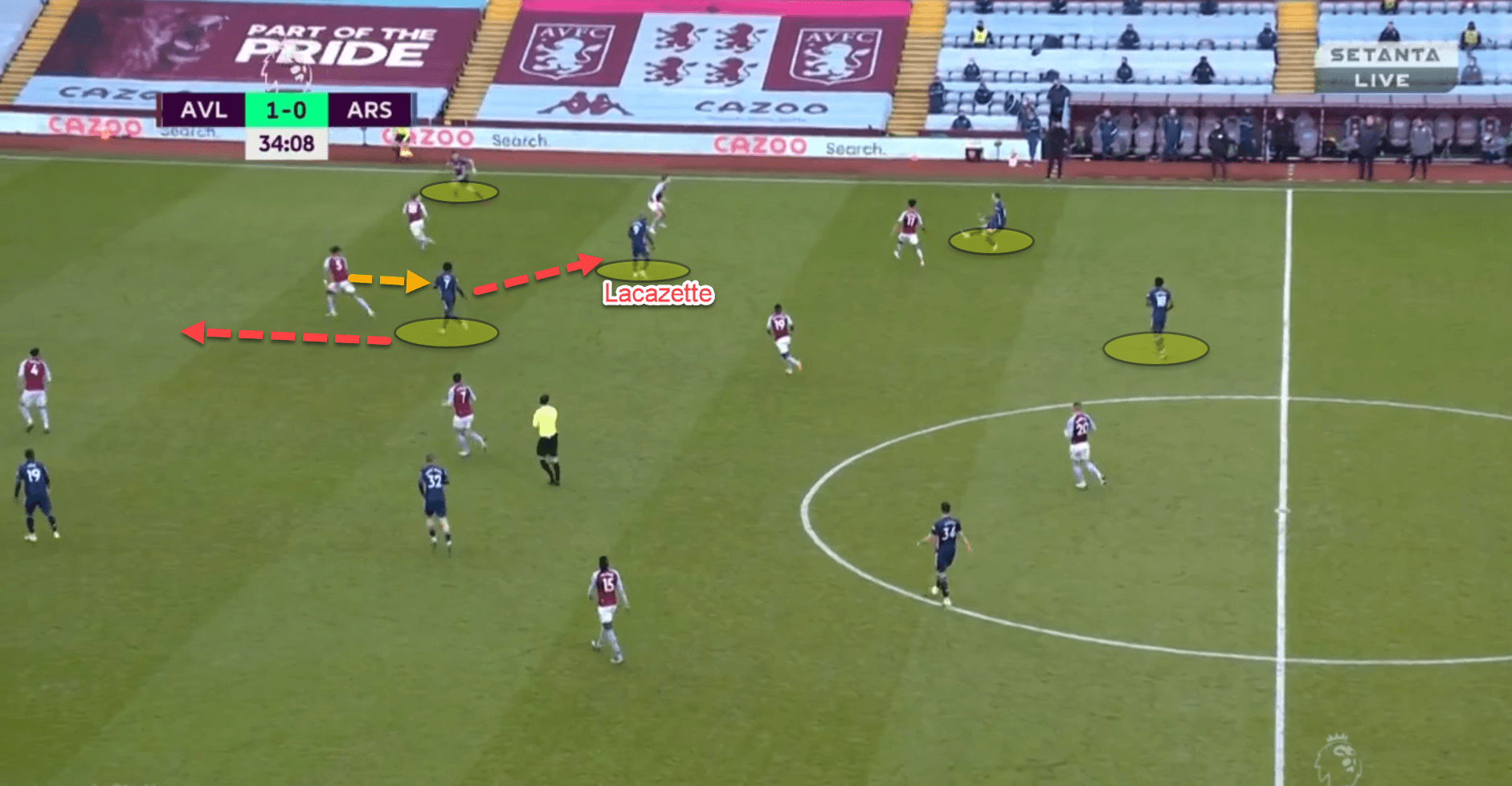
In this image, Lacazette has dropped into space between the lines, hoping to receive with his back to goal. By dropping short, he creates an extra progressive passing option for Arsenal to move up the pitch easier. It can also drag a defender out, leaving space for a runner in behind.
In the above image, Mings stayed disciplined and was not pulled out of position, which stopped any chance of Saka successfully getting in behind. If Benfica are to nullify Arsenal’s attacking threats, they must stay focused and disciplined and prevent opportunities like this from arising.
If they do occur, Arsenal can be deadly, which can be seen in the next picture.
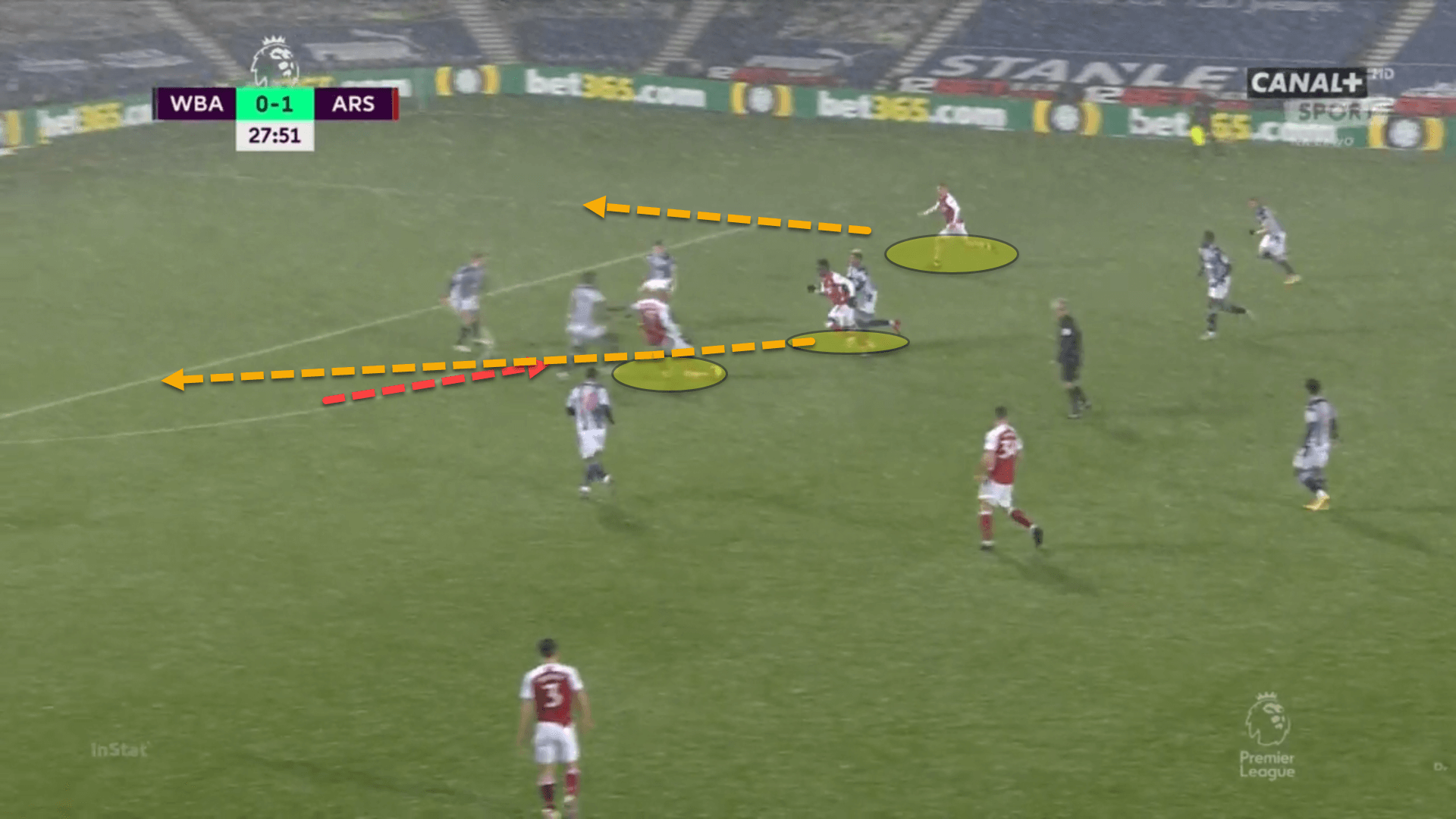
From this pattern of play against West Bromwich Albion, Lacazette dropped deep to receive with his back to goal, and the Baggies defender rushed out to close him down. This left space for Saka to run into, which allowed him to score merely a few seconds later.
As already stated, if Benfica can track the runners and stay disciplined rather than get pulled out of position, it will greatly prevent one of Arsenal’s main attacking strengths in the match.
Benfica struggling with the press
Benfica are a possession-oriented side under Jesus, having an average of 60.71 percent ball possession this season, and they like to play their way out from the back and build through the thirds rather than playing long, which they would be able to do due to the physicality and height of Nunez and Seferovic.
The Portuguese side’s positional structure in possession is similar to their opponents on Thursday and looks like a 3-1-4-2, or at times a 2-3-3-2 depending on how many players the opposition uses in the first line of pressure.
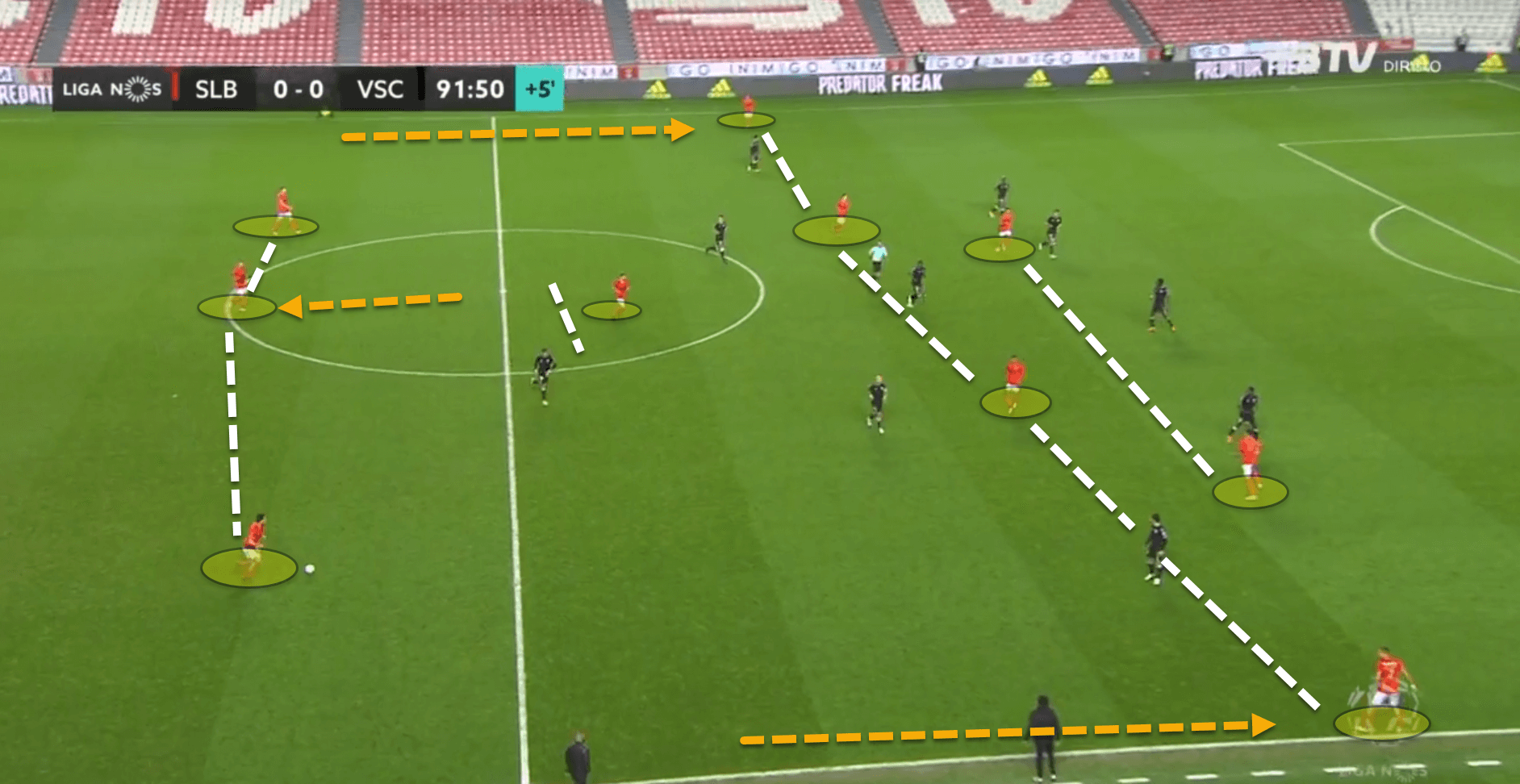
They are quite efficient at building out from the back, but they tend to struggle against teams who press intensely and force them into uncomfortable areas. This season in Liga Nos, Benfica have the highest Passer Per Defensive Actions Against (PPDA Against). This means that teams, particularly lesser teams respectively, tend not to press high against them and prefer to sit deep.
In Portugal’s top-flight division, the formation they have come up against the most is the 5-4-1, which has been used against them in 28 percent of their games in all competitions. However, when a team presses them high whilst in the build-up phase, generally in a man-oriented pressing system, Benfica struggle.
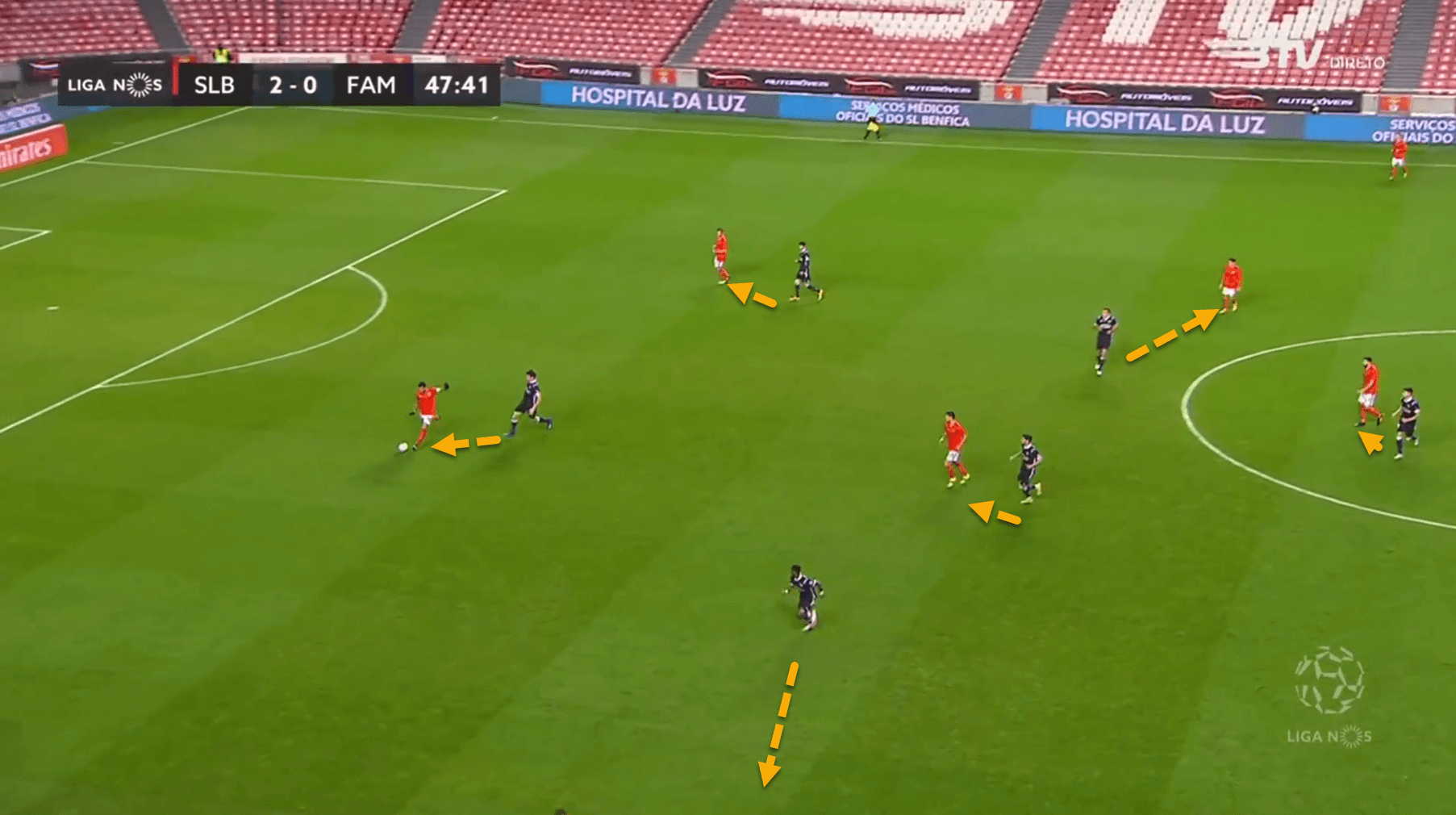
In this game against Famalicao, Benfica struggled to progress the ball in the central areas due to their opponent’s tight man-marking system, and so were forced into the wide areas in low positions on the field.
From here Famalicao would cut off forward passing lanes, forcing Benfica to either turnover possession or else play back to the keeper. As can be seen in the previous image, the Famalicao winger’s pressing trigger was when Benfica were getting ready to play out wide and so he began to sprint across to Gilberto, angling his run to cut off the passing lane down the flank.
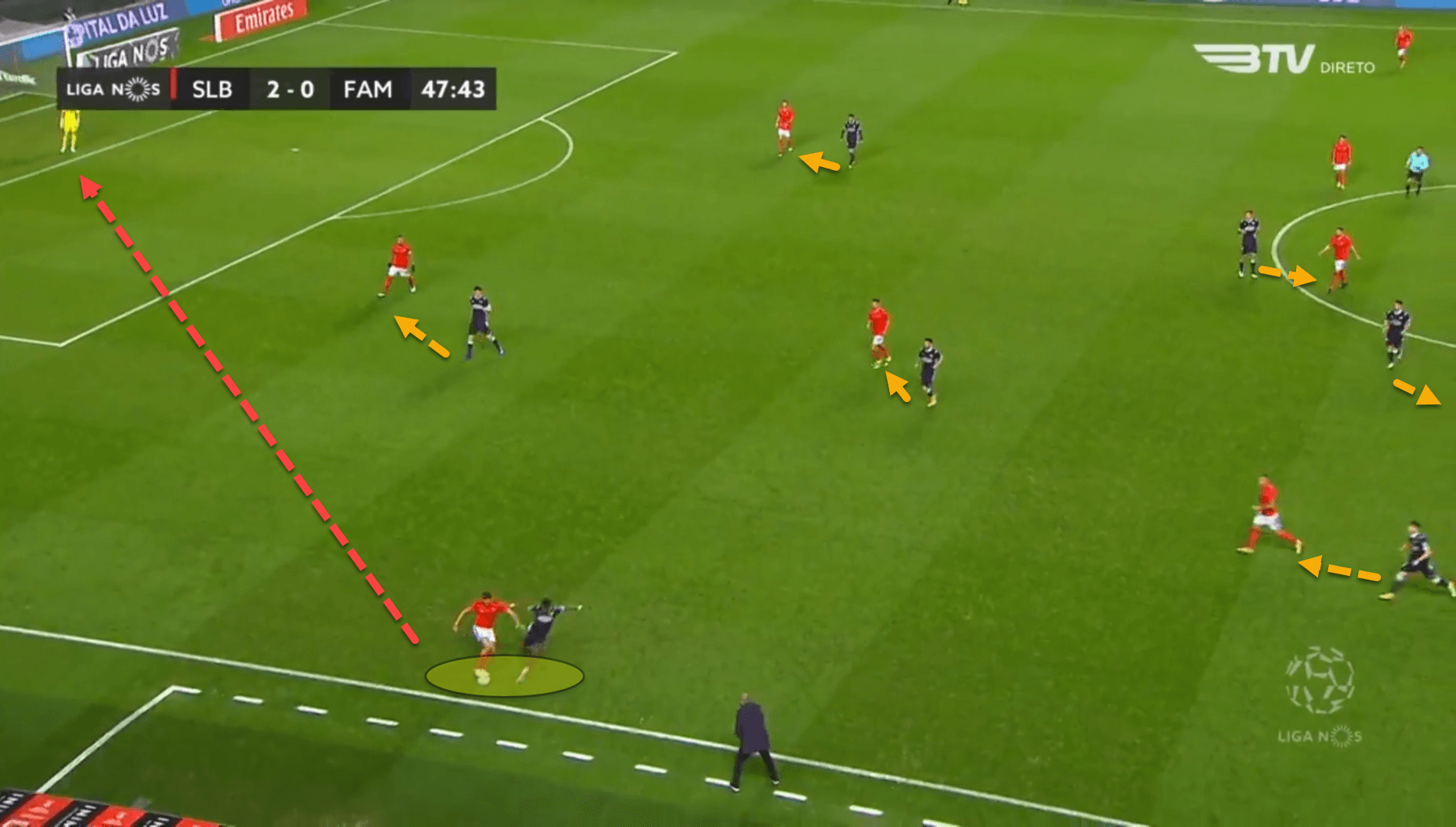
As we can see here, Famalicao successfully stopped Benfica’s build-up play by cutting off all the available passing lanes in their high press. As Benfica are quite stagnant in their build-up play, cutting off all available lanes forces them to play backwards or else turnover possession by risking a short pass to a marked player.
Arsenal are very efficient at high pressing their opponents as Arteta deploys a man-oriented pressing scheme when his side presses high off the ball. If the Gunners can force Benfica into areas as seen in the previous image, it will give them a massive chance to regain possession and transition forward in dangerous areas.
Against Leeds United at the weekend, in an emphatic 4-2 victory, Arsenal stifled their opponent’s play in the build-up phase with a very successful man-oriented high press.
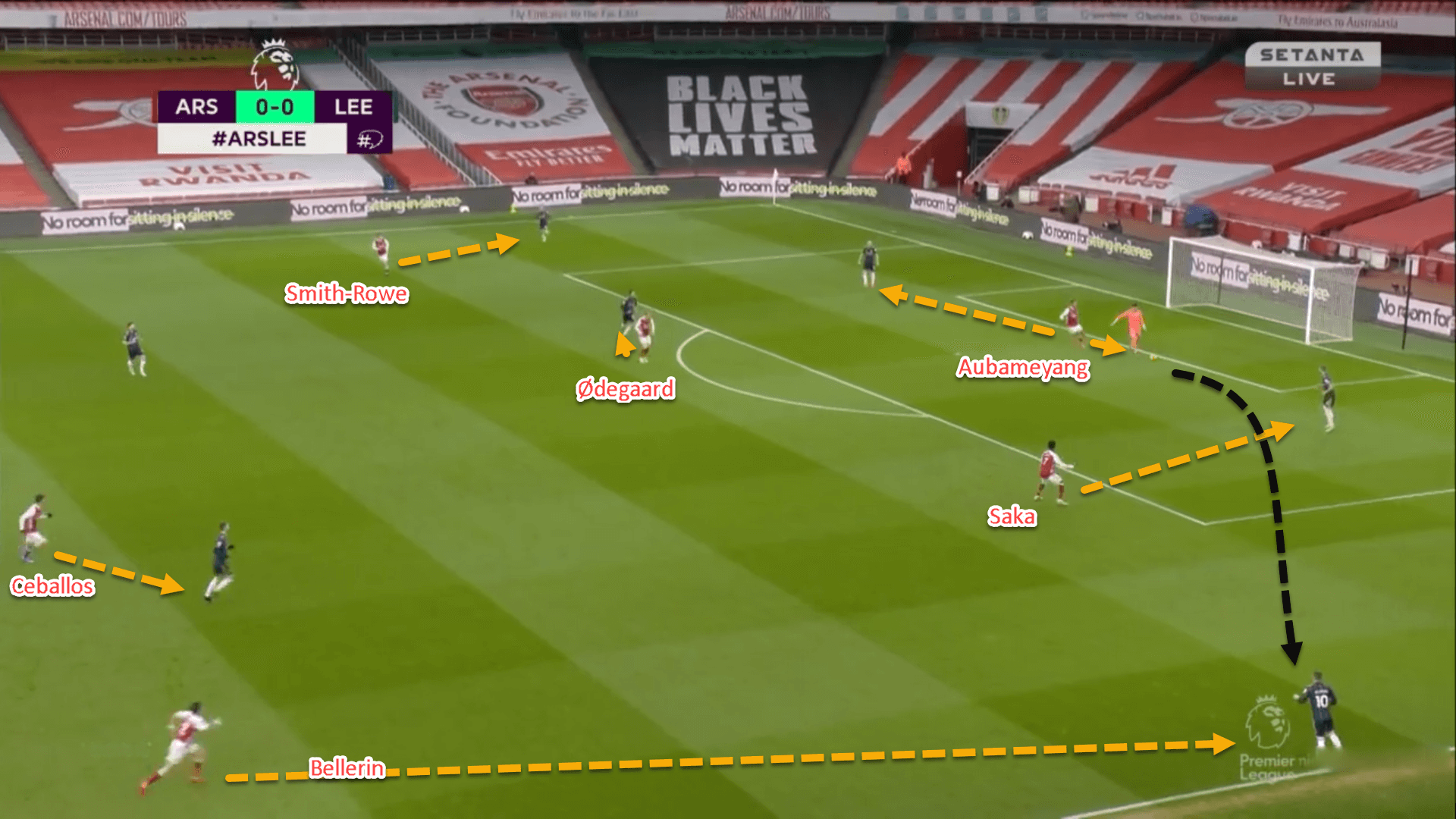
Here, we can see Arsenal’s man-oriented press in full effect. They man-mark passing lanes, with the end goal being to manipulate their opponents to play into a specific player or area of the field.
Even before the ball was played into Leeds’ left-back here in the build-up phase, Bellerin was on top of him, which forced a successful turnover of possession.
A similar system against Benfica would allow Arsenal to win the ball in dangerous areas and counter-attack with numbers and could be a very efficient way for the Gunners to score. Benfica will quite likely use their centre-forwards more when they are under fierce pressure from Arsenal in order to avoid the risk of losing the ball so close to the goal.
Benfica’s crossing prowess
As mentioned before, the home side like to play to their strengths in possession. They play down the flanks in the final third when they have the ball and look to put crosses into the box for their physical forwards to head home.
Benfica average the most amount of crosses per 90 in the Portuguese league in the 2020/21 campaign with 16.33 per game. To progress down the flanks, Os Encardos simply play around their opponent’s defensive block or else use combination play to get in behind out in the wide areas.
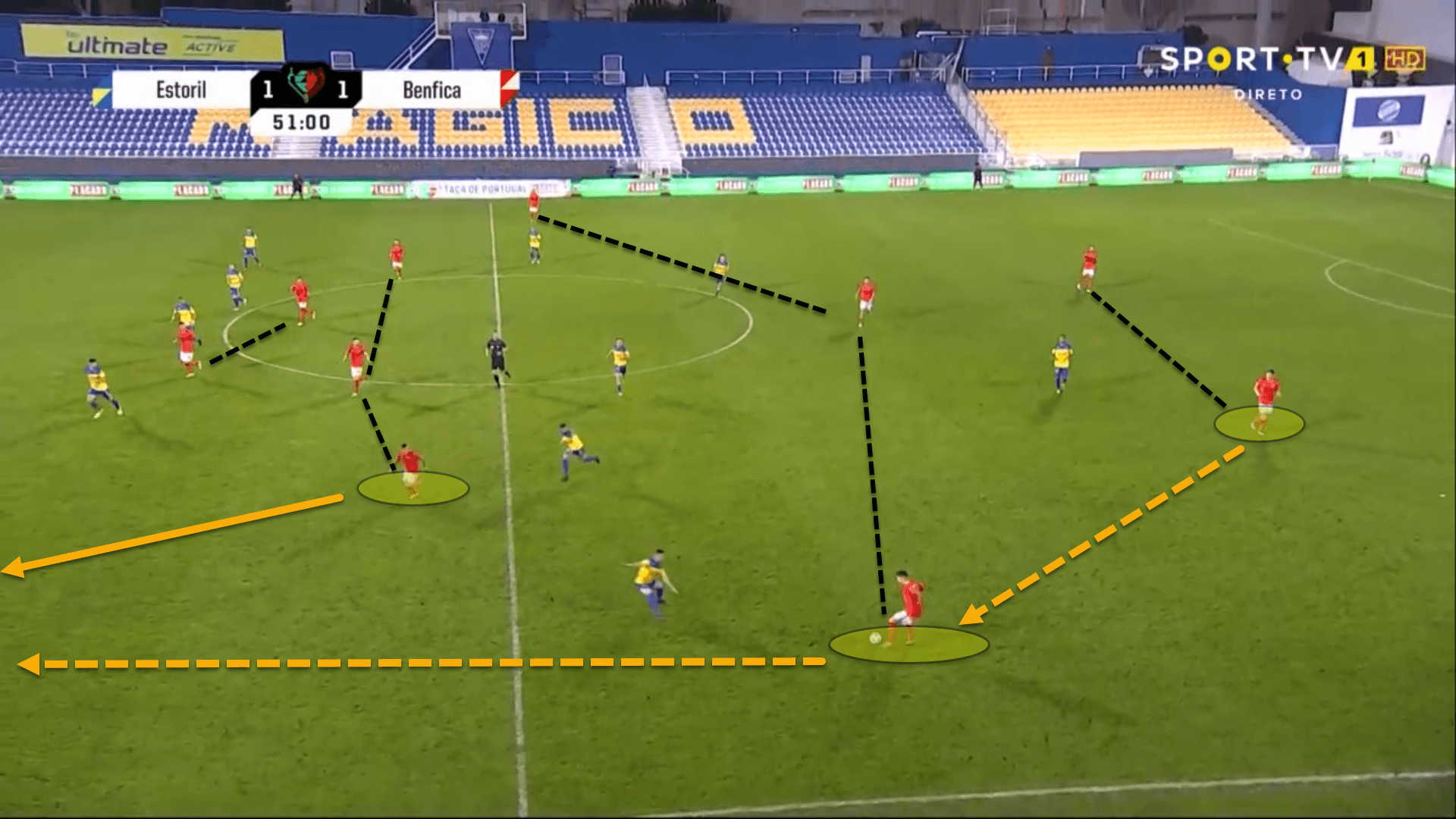
There is nothing overly technical or tactical about their progressive play down the flanks. Having so many players in central positions, as can be seen above, forces the opposition’s defensive block to be narrow and compact, which in turn leaves space out wide.
One of their main passages of play in their positional attacking structure comes from when a Benfica fullback receives the ball. The opposition’s winger/fullback usually quickly moves across to close him down, which leaves space on his blindside for a Benfica player to run into and attack the space in behind, which can be seen again in the following image:
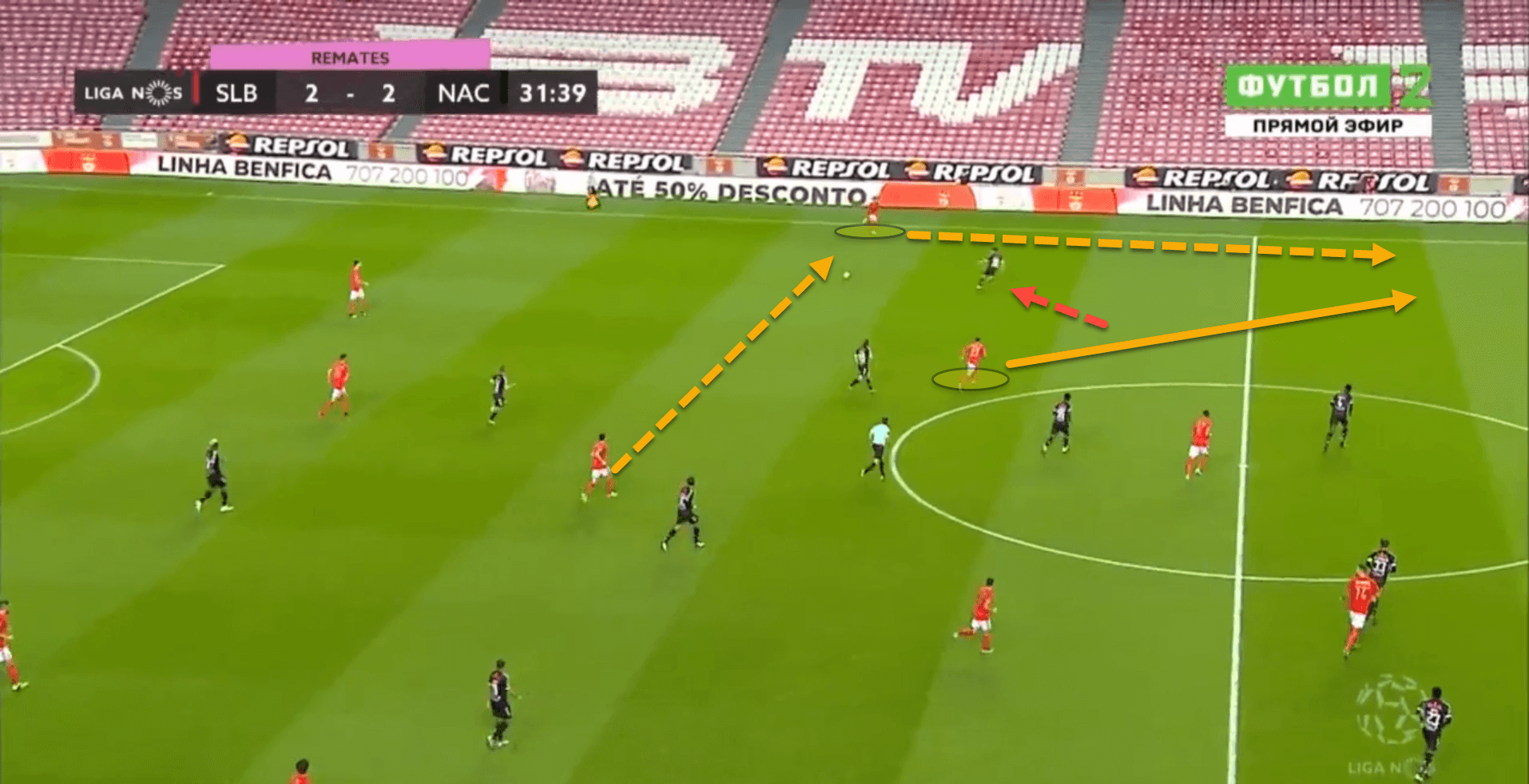
Arsenal will need to be wary of this move as the home side’s centre-forwards are aerially dominant and will look to exploit the Gunners from crosses into the box.
Conclusion
This game will certainly be one to watch, not only from an entertainment point of view but from a tactician’s perspective too. The three points above are key tactical aspects of tomorrow’s game that will surely come to fruition. Arsenal will need to find a way of nullifying Benfica’s play in the wide areas, whilst the Portuguese side must find a way through their opponent’s high press and try to stay defensively disciplined as well.
A clean sheet for Benfica is a must in this game in order to not give Arteta’s team any away goals, and failure to do so will mean that Jesus’ men have a mountain to climb in the second leg, meanwhile, Arsenal will do everything they can to control this game and put the tie to bed, allowing them to rest players in the reverse fixture.

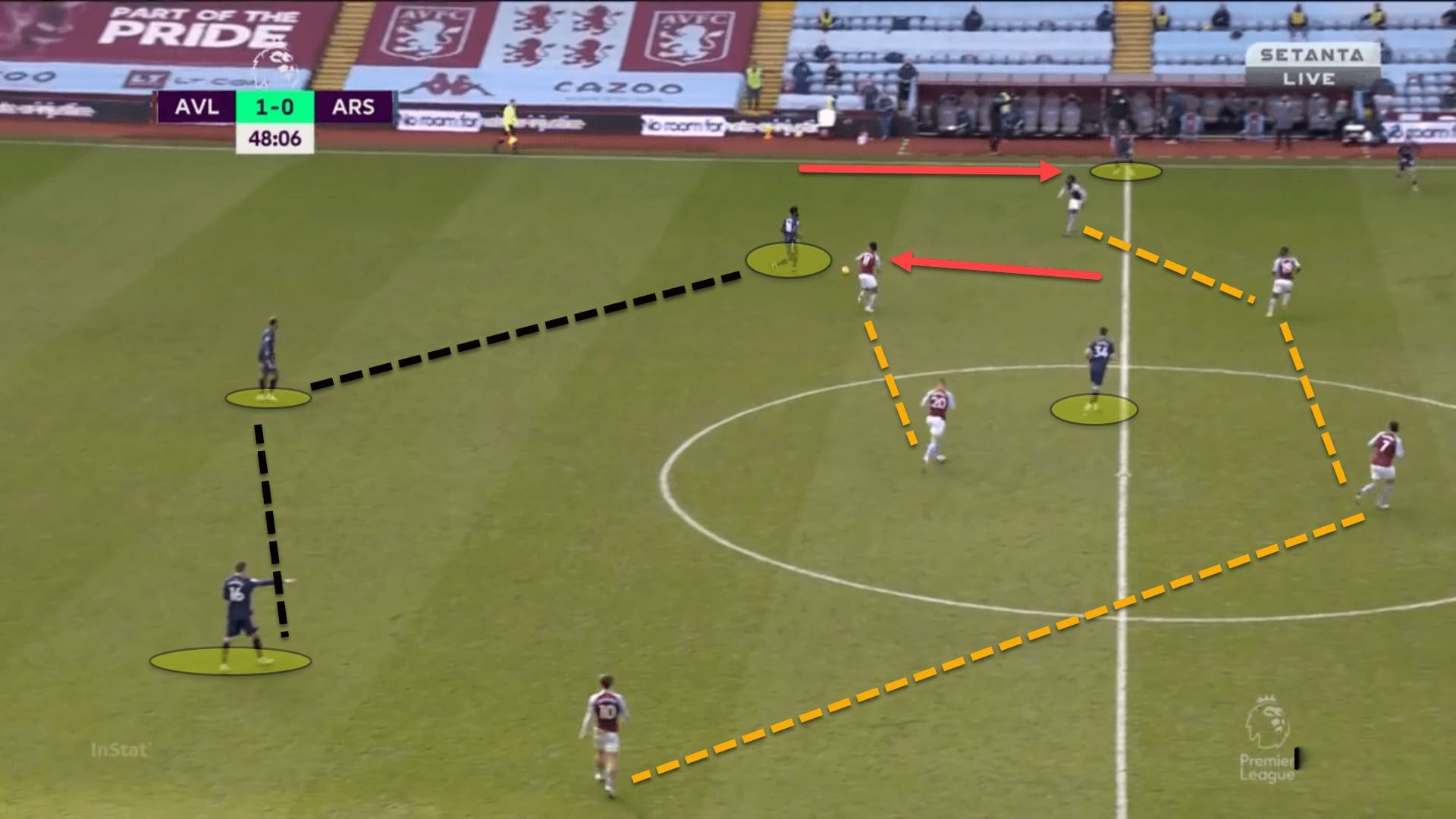




Comments